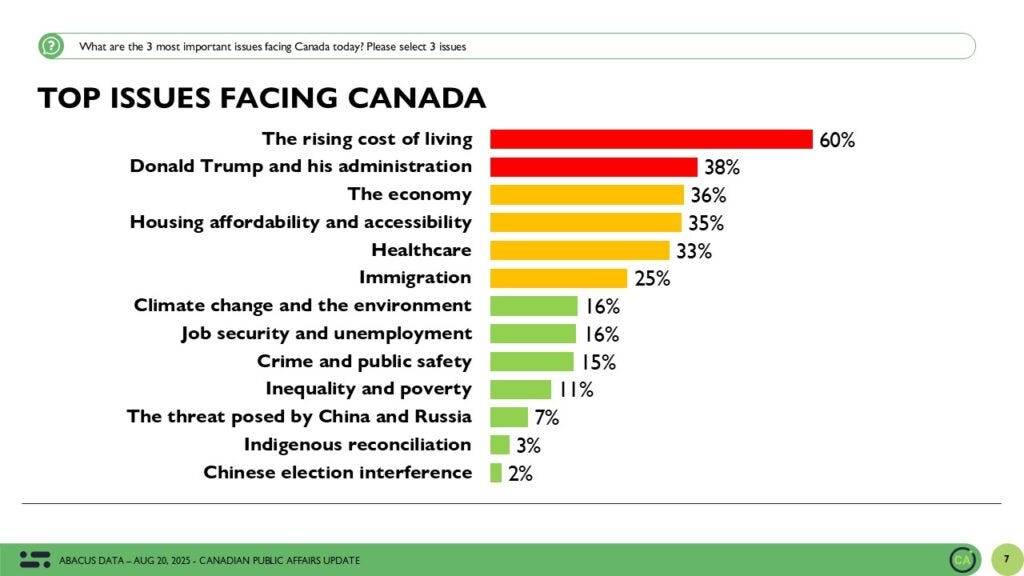The Immigration Pressure Cooker: Canada's Defining Future Fight
Immigration is not just testing Canada’s housing and healthcare systems—it’s testing who we are.
Immigration is no longer a background issue in Canada. It is the centerpiece of our national debate, overtaking crime and public safety, climate change, and job security, according to a recent poll by Abacus.
Latest poll from Abacus shows the top issues facing Canada. Immigration is in the top six
Politicians are choosing sides. Public trust is wavering…



